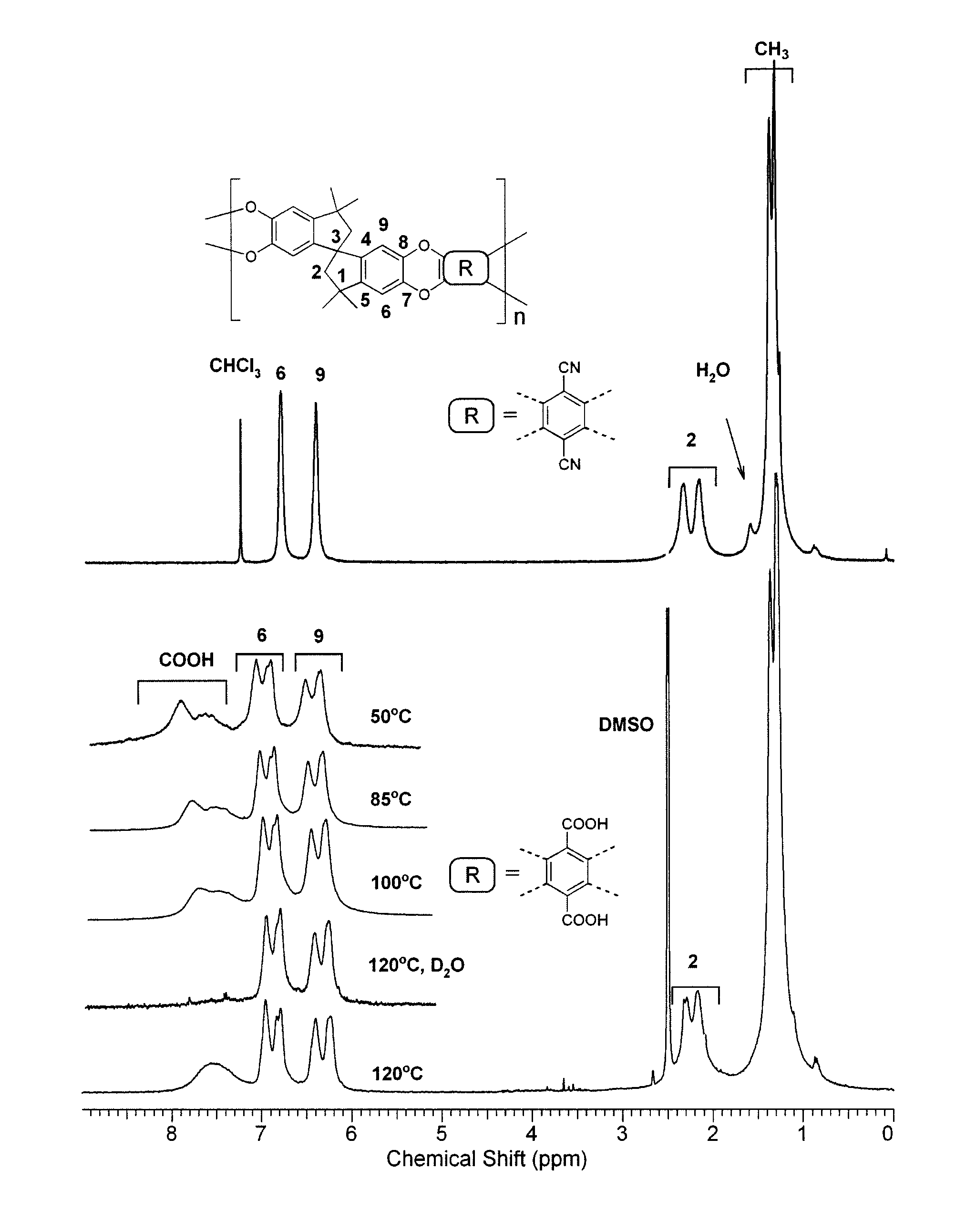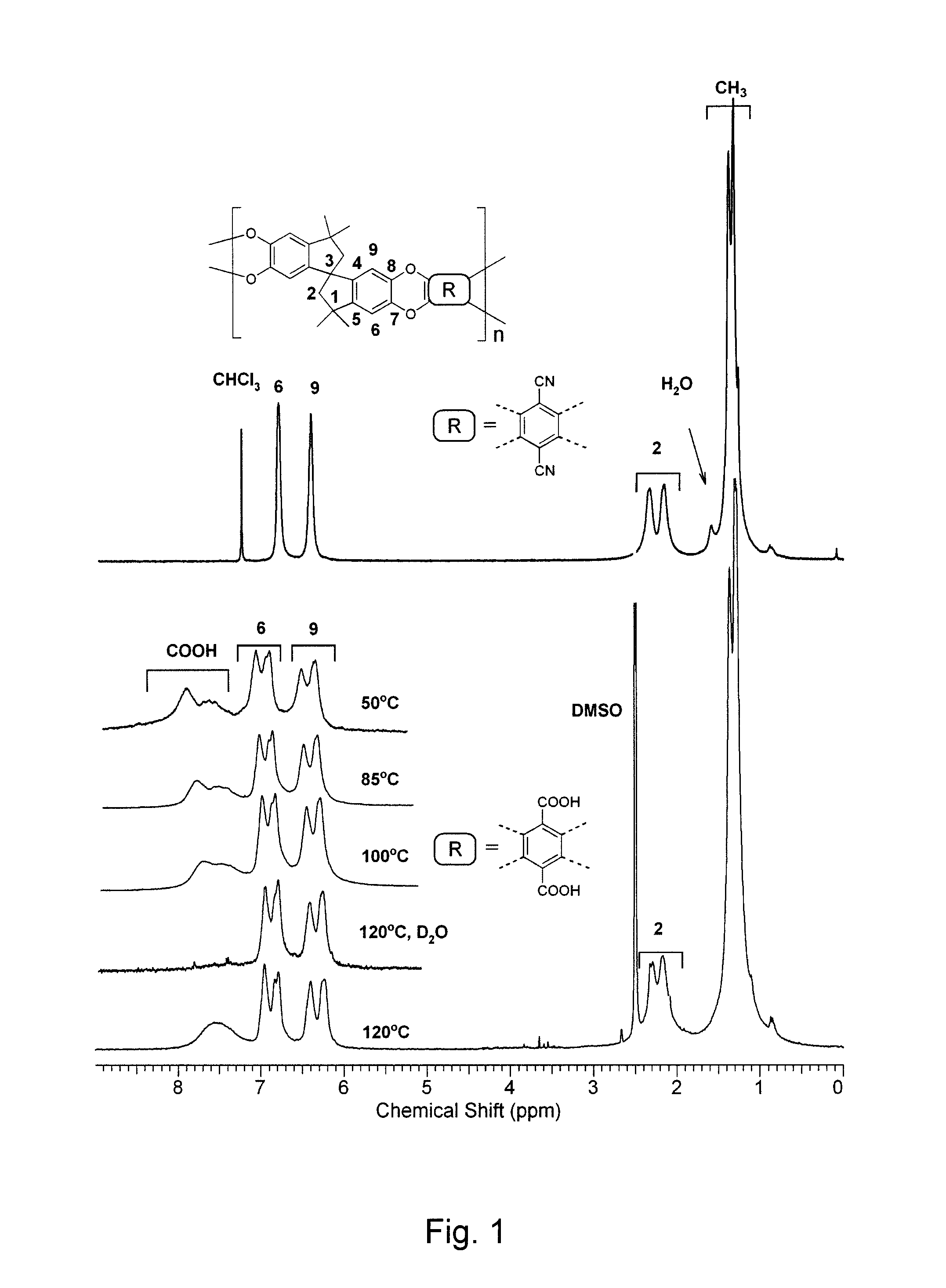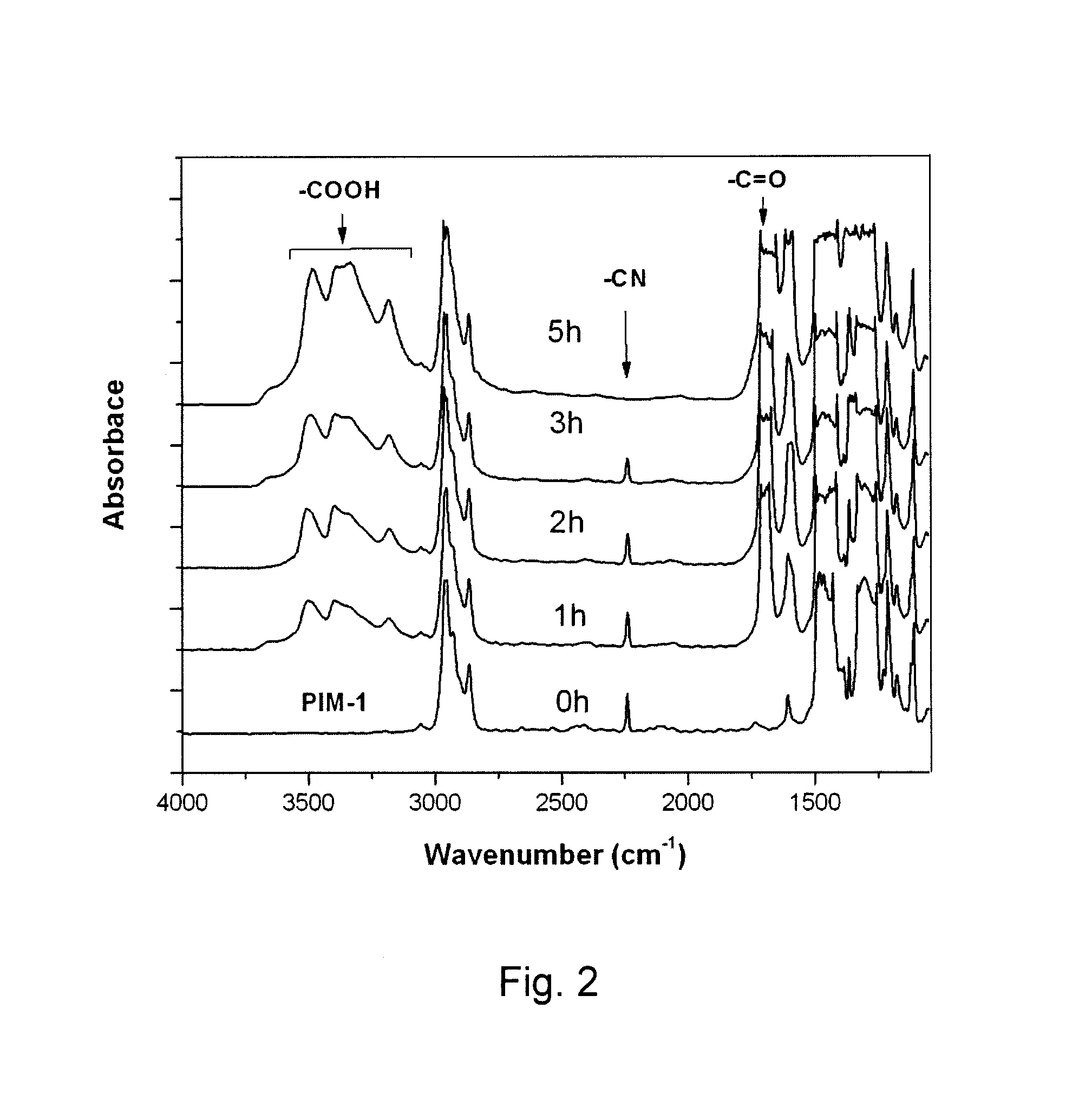Carboxylated polymers of intrinsic microporosity (PIMs) with tunable gas transport properties
a technology of intrinsic microporosity and carboxylated polymers, which is applied in the field of membranes of carboxylated ladder polymers, can solve the problems of not being able to control the degree of hydrolysis, and achieve the effect of convenient provision of membranes
- Summary
- Abstract
- Description
- Claims
- Application Information
AI Technical Summary
Benefits of technology
Problems solved by technology
Method used
Image
Examples
example 1
Preparation of Films of Carboxylated PIM-1
[0034]In the present work, the PIM-1 starting material used for the hydrolysis experiments was gel-free and had high molecular weight (Mn=50,000, PDI=2.0), which was obtained under an optimized polycondensation process (Du 2008). Dense PIM-1 films were prepared from 1-2 wt % polymer solutions in chloroform, which were filtered through 0.45 μm polypropylene filters and then cast onto glass Petri dishes in a glove box and allowed to evaporate slowly for 1 day. The resulting membranes with thicknesses in the range of 70 to 90 μm were soaked in 20% sodium hydroxide solution (H2O:Methanol=1:1) at different temperatures. Scheme 1 shows possible resulting repeat units derived from different degrees of hydrolysis. Polymer repeat units may contain zero, one or two nitrile groups and correspondingly have two, one or zero carboxylic acid groups. At low temperatures (25° C. and 65° C.), the hydrolysis reaction occurred rapidly during the initial stage, ...
example 2
NMR and FTIR Characterization of Carboxylated PIM-1
[0036]The fully carboxylated-PIM (120° C.-5 h) was characterized by 1H and 19F NMR spectroscopy. Stacked 1H NMR spectra of PIM-1 in CDCl3 and carboxylated-PIM in DMSO-d6 (120° C.-5 h) are displayed in FIG. 1 along with peak assignments derived from 2D-NMR. The intensities and the shapes of the carboxylated-PIM polymer 1H NMR signals were monitored at different NMR probe temperatures: 50° C., 85° C., 100° C., 120° C. The observed peak intensity ratio for the aromatic (5.75-8.50 ppm, H-6, 9 and COOH) and aliphatic (0.25-2.4 ppm, H-2 and CH3) regions was exactly 6H:16H as expected from the molecular structure. Furthermore, the broad peaks in the 7.1-8.5 ppm area changed shape with increasing temperature. It is well known in NMR spectroscopy that changes in the sample temperature will affect the mobility of the molecules, and hence, the shape of the signals. This is particularly noticeable with protons involved in hydrogen bonding (exch...
example 3
Determining Degree of Hydrolysis of Carboxylated PIMs
[0038]Generally, the intensities of —CN absorption bands can be used to calculate the approximate degree of hydrolysis. However, in the particular case of PIM-1 hydrolysis, where two symmetrical para-substituted —CN groups occur, symmetrical —CN groups have different intensities from asymmetrical —CN groups, which would occur after hydrolysis. Therefore, the degree of hydrolysis cannot be conveniently determined quantitatively by FTIR spectra. However, a relationship between degree of hydrolysis and carbon content of the polymer can be conveniently established using the following equations: C=348.3 / (460.48+38H) or H=(348.3−460.48C) / 38C, where C is the carbon content and H is hydrolysis degree. A standard calibration line obtained by calculation is plotted in FIG. 3. The carbon content of the carboxylated-PIMs can be detected by elemental analysis, thus the degree of hydrolysis can be ascertained from the line. Because carboxylated...
PUM
| Property | Measurement | Unit |
|---|---|---|
| temperature | aaaaa | aaaaa |
| time | aaaaa | aaaaa |
| temperature | aaaaa | aaaaa |
Abstract
Description
Claims
Application Information
 Login to View More
Login to View More - R&D
- Intellectual Property
- Life Sciences
- Materials
- Tech Scout
- Unparalleled Data Quality
- Higher Quality Content
- 60% Fewer Hallucinations
Browse by: Latest US Patents, China's latest patents, Technical Efficacy Thesaurus, Application Domain, Technology Topic, Popular Technical Reports.
© 2025 PatSnap. All rights reserved.Legal|Privacy policy|Modern Slavery Act Transparency Statement|Sitemap|About US| Contact US: help@patsnap.com



